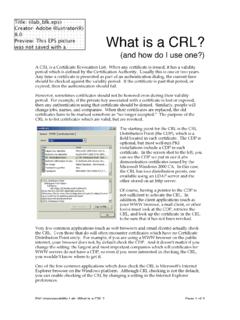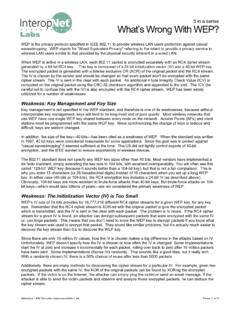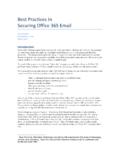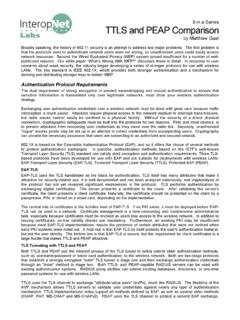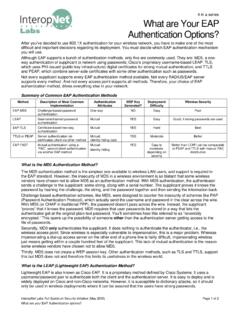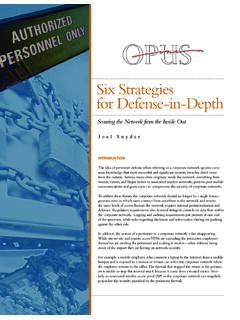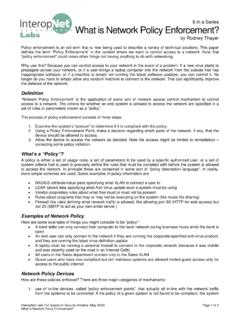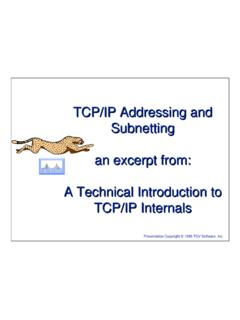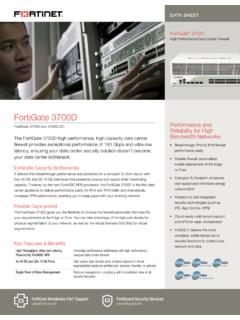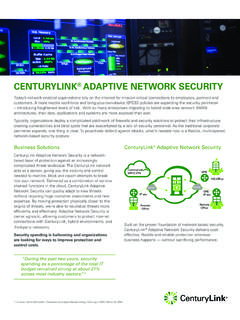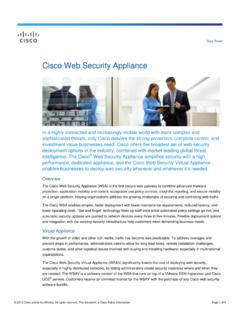Transcription of Firewalls in the Data Center: Main Strategies and …
1 Firewalls in the data center : main Strategies and MetricsJoel Snyder, PhDSenior Partner, Opus OneWhat You Will LearnMeasuring performance in networks has usually involved looking at one number: throughput. Since the first days ofswitches and routers, organizations have added up the performance they need, compared it to a total on amanufacturer s data sheet, and used those values to decide whether or not they had the right network managers have added Firewalls to improve the security of the data center , the same performanceengineering spotlight that shines on routers and switches is being applied to security appliances.
2 When speedsjump above 10 Gbps as these Firewalls move closer to the core of the data center , reliable performance metrics arecritical. Unfortunately for security and network practitioners, the same basic metric of throughput cannot be used toevaluate firewall performance. Because a security appliance actively participates in connections from Layer 2 up toLayer 7, you cannot simply look at bits-per-second throughput to predict how a firewall will behave in the datacenter. In this document, you will learn key metrics you should use to evaluate firewall performance in the data center andwhy raw throughput is almost never the most important performance metric to use in your planning.
3 Selecting afirewall does not mean simply picking the fastest firewall , but the one that is designed to handle the rapidly evolving, network -intensive application environment of the data center . You will also learn why today s Firewalls must be builtfrom the start to support today s network -based applications, and how to confidently use Firewalls to increasesecurity in data firewall PerformanceBecause organizations always start with feeds andspeeds (how many ports and how fast do they go)when evaluating switches and routers, it is temptingto apply these same metrics to Firewalls : how manybits per second (bps) or packets per second (pps)can the device handle?
4 If the firewall will go in thenetwork core, it seems logical to use the sameperformance metrics for a security device that youuse for a network example, stateless UDP traffic (such as youwould see in a network File System (NFS)) andlong-lived TCP connections (such as you would see in a Microsoft Windows file system, an iSCSI Storage AreaNetwork (SAN), or a backup application) are common in many data center networks. These types of applicationspresent continued and heavy load to the network . When you send file system traffic through a data center firewall , bits-per-second performance measurements areyour starting point.
5 But even in these simple cases, other performance metrics are equally important. For example,latency is a critical concern, because if the firewall introduces delays, applications will be affected. Because of thenature of TCP and file system protocols, even a small increase in latency can cause dramatic MultiScale performance is acombination of breadth and depth. Itprovides rapid connections per second, anabundance of concurrent sessions, andaccelerated throughput. It also enablesmultiple security services and spansphysical, switch, and virtual platforms forexceptional flexibility.
6 Fred Kost, Cisco SystemsUnfortunately, performance engineering gets more complex as your application mix goes beyond pure file systemprotocols. After all, the network services that organizations are most interested in securing are application-layerprotocols. This is where the problem occurs, because when a firewall is securing complex application traffic, youcannot measure performance in just bits-per-second and milliseconds of and routers are active participants in the traffic that flows through them, but only up to Layer 3, the IPlayer.
7 Firewalls , however, are aware of each TCP connection and UDP session that passes through them. Theyparticipate at Layer 4, the session layer, at a minimum. As application connections come and go, the firewall mustalso create and tear down its own internal data structures to maintain state information for every session. This stateinformation is checked and updated for every packet that passes through the firewall to provide the highest level ofprotection against sophisticated attacks. When the firewall is also providing network Address Translation (NAT) services or running Application LayerGateways (ALGs) for applications such as voice over IP (VoIP) or video conferencing, the load rises even higherbecause the firewall has to decode and manage traffic all the way up to Layer 7, the application layer.
8 Movingfurther and further up the stack makes network engineering more difficult and performance measurement the data center , application traffic puts a very different load on the network than file system traffic. Client-servercommunications between users and servers, and server-server communications between application, database,and directory servers have very different profiles. Application traffic is connection intensive, with connectionsconstantly being set up and torn down. This connection intensity adds another dimension to performanceengineering.
9 You must look beyond pure IP throughput and latency and include connection rates and a user logs in and connects to a file server, a TCP connection is created that can stay alive for hours. A half-second of delay in connection establishment will not even be noticed. But if the same user runs an application thatopens two dozen connections for every page displayed, and each connection takes 500 extra milliseconds to set upbecause a firewall is adding delay, productivity will be affected. The evolution of modern applications is tipping the balance from pure performance measures to metrics such asconnection rate and concurrent-connection capacity.
10 For example, look at the Cisco website. In the past 15 years,while the size of the homepage has increased by 30 percent, the number of end-user connections required todownload the page has tripled. Further, this value refers just to the page that appears to greet visitors. Logged-inusers present an even heavier load as cookies are checked and the page is dynamically updated (Figure 1).These statistics show only the front end of the application. Consider that for every page displayed, the front-endweb server may also be querying for directory information, including subscription and entitlement information,checking security permissions, updating back-end state information and setting cookies, tracking user preferences82326165K232K274538 Number ofConnectionsNumber ofHostsKilobytesTransferredPacketsTransf erred19962010 The size of the web page increased by 30 percent over 15 years, but the number ofnetwork connections required tripledFigure 2and history.
